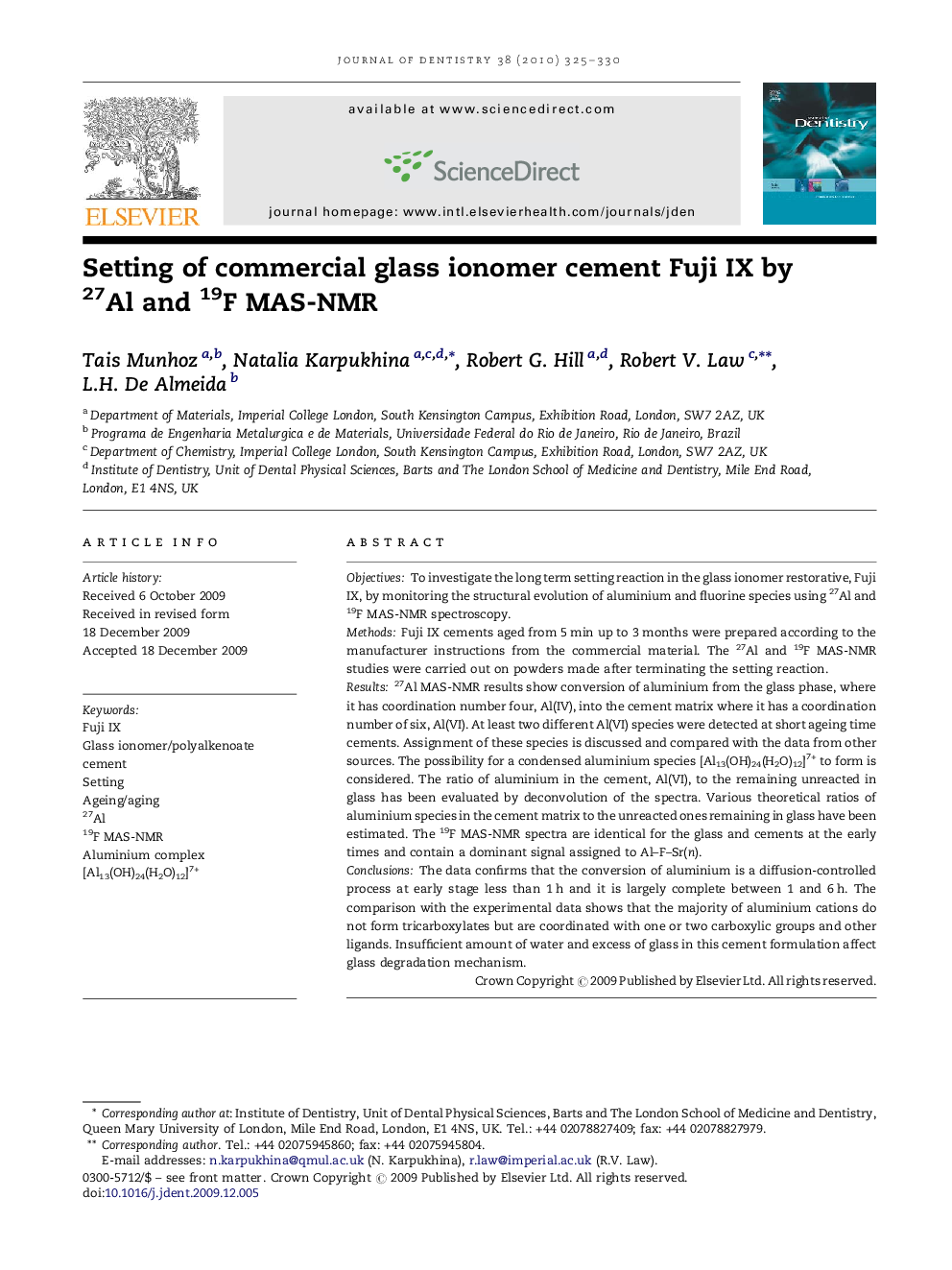| کد مقاله | کد نشریه | سال انتشار | مقاله انگلیسی | نسخه تمام متن |
|---|---|---|---|---|
| 3146119 | 1197149 | 2010 | 6 صفحه PDF | دانلود رایگان |

ObjectivesTo investigate the long term setting reaction in the glass ionomer restorative, Fuji IX, by monitoring the structural evolution of aluminium and fluorine species using 27Al and 19F MAS-NMR spectroscopy.MethodsFuji IX cements aged from 5 min up to 3 months were prepared according to the manufacturer instructions from the commercial material. The 27Al and 19F MAS-NMR studies were carried out on powders made after terminating the setting reaction.Results27Al MAS-NMR results show conversion of aluminium from the glass phase, where it has coordination number four, Al(IV), into the cement matrix where it has a coordination number of six, Al(VI). At least two different Al(VI) species were detected at short ageing time cements. Assignment of these species is discussed and compared with the data from other sources. The possibility for a condensed aluminium species [Al13(OH)24(H2O)12]7+ to form is considered. The ratio of aluminium in the cement, Al(VI), to the remaining unreacted in glass has been evaluated by deconvolution of the spectra. Various theoretical ratios of aluminium species in the cement matrix to the unreacted ones remaining in glass have been estimated. The 19F MAS-NMR spectra are identical for the glass and cements at the early times and contain a dominant signal assigned to Al–F–Sr(n).ConclusionsThe data confirms that the conversion of aluminium is a diffusion-controlled process at early stage less than 1 h and it is largely complete between 1 and 6 h. The comparison with the experimental data shows that the majority of aluminium cations do not form tricarboxylates but are coordinated with one or two carboxylic groups and other ligands. Insufficient amount of water and excess of glass in this cement formulation affect glass degradation mechanism.
Journal: Journal of Dentistry - Volume 38, Issue 4, April 2010, Pages 325–330